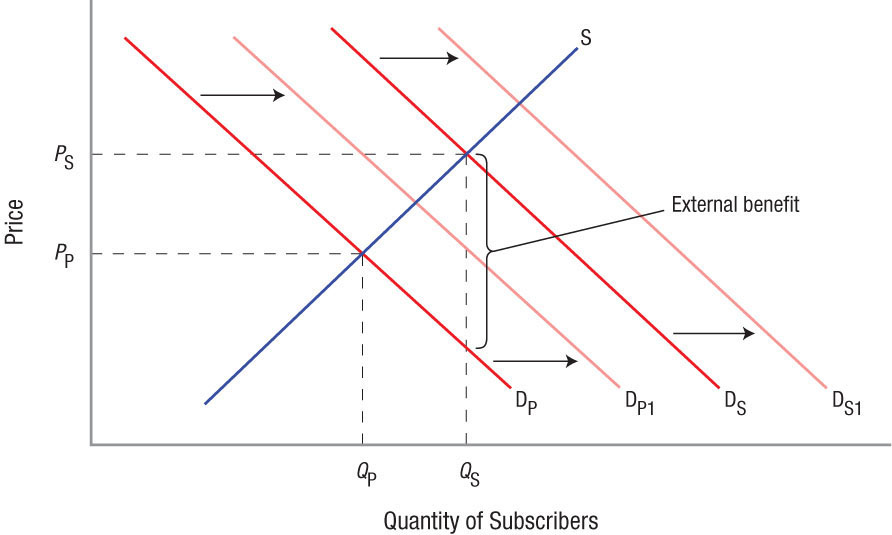What Is a Network Good?
network A structure that connects various entities with one another. A network can be physical, virtual, or social.
physical network A network connected by a physical structure such as fiber optics, transportation routes, or satellites.
virtual network A network connected by groups of people using the same type or brand of good.
social network A network that combines elements of physical and virtual networks by describing groups of people using the same product or service who also are connected more directly (for business or entertainment purposes) within the network.

A network is a type of structure that connects various entities with one another. There are three kinds of networks. First, there are physical networks, which are connected by fiber optics (such as a telephone network), transportation routes (such as an airline), satellites (such as a GPS network), or other physical connections. Second, there are virtual networks, which describe a network connected by groups of people using the same type or brand of good (such as mobile phone service, video game console, search engine, or software). Third, there are social networks, which combine elements of physical and virtual networks and describe groups of people using the same product or service who also are connected more directly (for business or entertainment purposes) within the network, such as through the use of “friends” on social networking sites and face-to-face networking in traditional business clubs, country clubs, or health clubs.
Types of Network Goods
network good A good or service that requires the existence of a physical, virtual, or social network to exist.
A network good describes a type of good or service that depends on the existence of a physical network, virtual network, or social network to exist. Although network goods have existed for centuries, the Internet created an immense rise in their importance, given the increased interaction between people and the information they share with one another. Today, network goods are ubiquitous and include but are not limited to smartphones, the Internet, satellite radio, software, digital music, MP3 players, 3D televisions, and social networking sites.
Network Effects
network externality An external benefit generated from the consumption of a network good.
network effect An external benefit generated from the consumption of a network good that is taken into account by individuals and firms in their decision making. It increases the value of a good as more people use or subscribe to a good.
An important characteristic of a network good, whether connected physically or virtually, is that the production or consumption of that good creates a positive external benefit to others. For example, owning the newest Microsoft Xbox console capable of network play is not very useful if no one else owns the same system. As more people purchase the system, there are more people to play games with online, which encourages companies to develop more games. As a result, the value rises to those who already own the console and to those considering whether to purchase one. This rise in value is referred to as a network externality. When this benefit is taken into account in an individual or firm’s decision making, it is known as a network effect.
Suppose you start a new social networking site for economics majors around the country to interact with one another. Initially, the value of such a network is limited to you and a few classmates who sign up. However, with each additional user, the potential benefit expands and generates spillovers to all users. Similarly, by subscribing to Facebook, you gain access to more than a billion potential “friends” (a clear benefit to you), while you provide an external benefit (albeit quite small unless you’re famous) to all 1 billion existing users.
These examples highlight an important difference between a network externality and a positive externality as described in Chapter 13. As we saw in that chapter, a person generating a positive external benefit does not directly benefit from the externality he or she is creating. However, a network externality benefits all users, including the initial user and even potential users, because the external benefit increases the value of the overall network. This in turn generates even more demand for the network good.
369
Figure 1 illustrates the network effect described above. The consumer generates an external benefit equal to the vertical distance between the private demand curve, DP, and the social demand curve, DS. This external benefit increases the value of the overall network to its existing and potential users. The rise in the value of the network generates even more demand, as shown by the rightward shift of DP and DS to DP1 and DS1, respectively. Although marginal benefit is not shown, it is important to note that external benefits are subject to diminishing returns. As a network becomes larger, an increase in demand generates fewer additional benefits to others. The benefit added by the 100th user in a new network is greater than the benefit added by the 100-millionth user.

Network effects also can work in reverse. When a consumer leaves a network, the value of the network is reduced to all remaining users, which may lead to a larger left ward shiftin demand than is warranted by the loss of only one user. Note that this is not the same as a negative externality, which imposes a cost on others and causes the supply curve to shift to the left. In the present case, leaving a network removes the external benefit that had been provided to others. The dynamic nature of how network effects influence the demand for network goods affects how a network demand curve is derived.
WHAT IS A NETWORK GOOD?
- Networks can be categorized into physical networks, virtual networks, and social networks.
- A network good is a good whose demand depends on the existence of a physical, virtual, or social network.
- Network externalities are generated when the consumption and/or production of a good leads to additional benefits to all existing users of a good. Taking away these externalities leads to diminished benefits but does not add a cost.
- When network externalities are taken into account in an individual or firm’s decision making, they are referred to as network effects. Network effects can lead to a larger rise or a larger decline in demand than would occur in a nonnetwork industry.
370
QUESTION: Suppose your best friend purchases a new high-tech laptop that allows users to work simultaneously on the same software file. How might your friend’s purchase lead to a network effect that generates additional demand?
When your friend purchases a laptop capable of using newer, more elaborate software, it generates a benefit to anyone else (especially you) who would find it useful to collaborate on projects. As a result, your friend’s laptop purchase increases the value of the laptop to you (a network effect), increasing the likelihood that you will purchase a similar laptop. And once you purchase the laptop, this will generate additional benefits to your other friends, potentially generating even more demand.